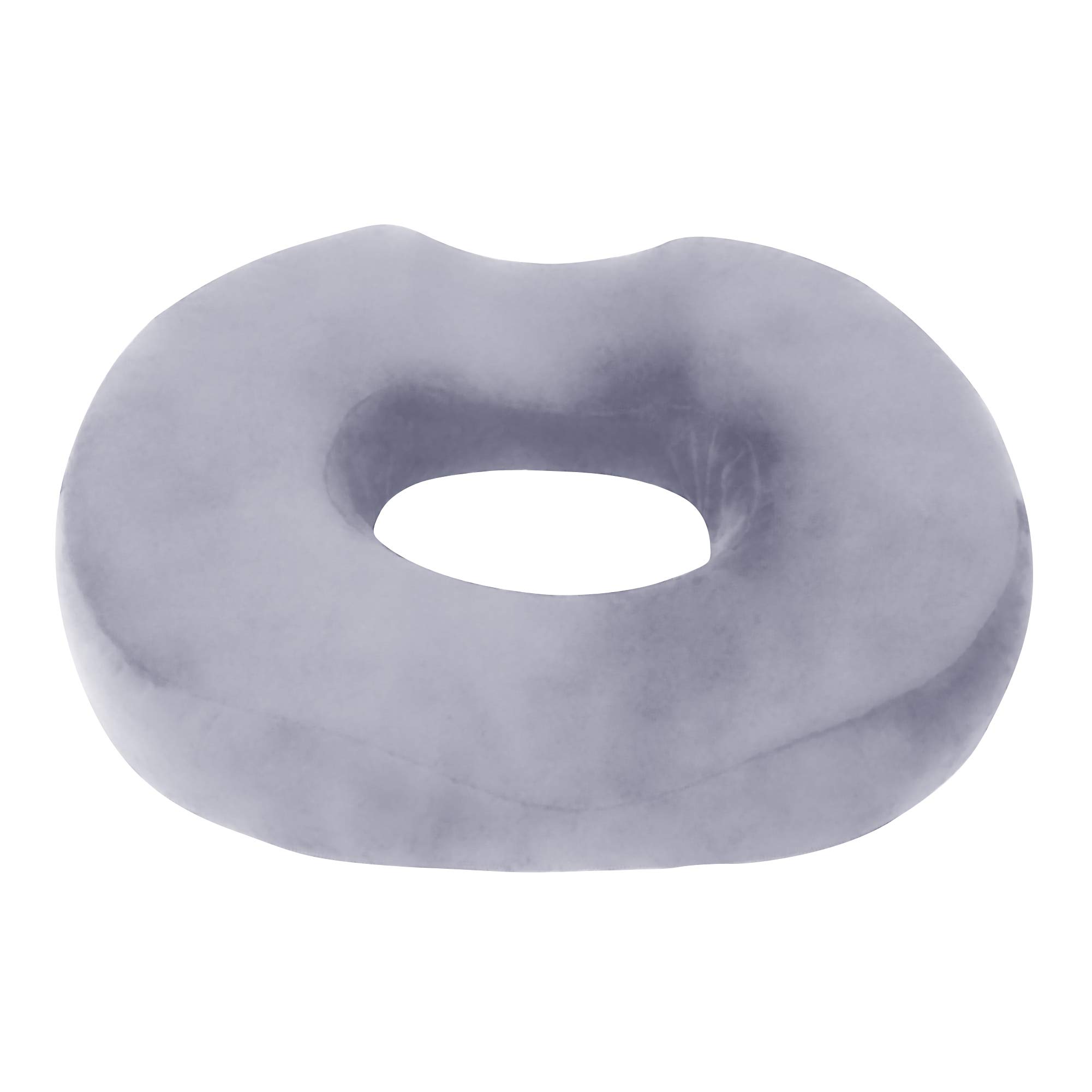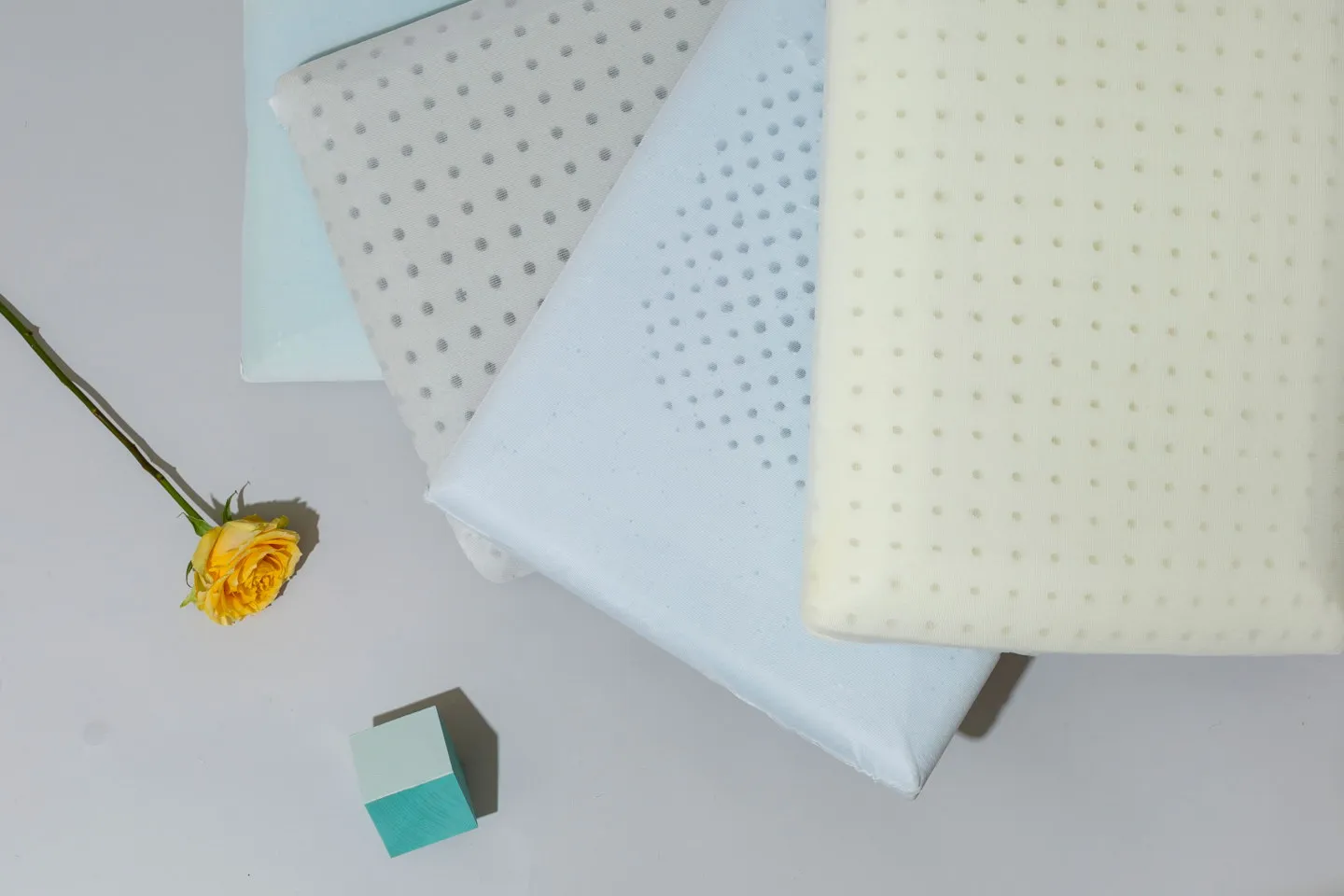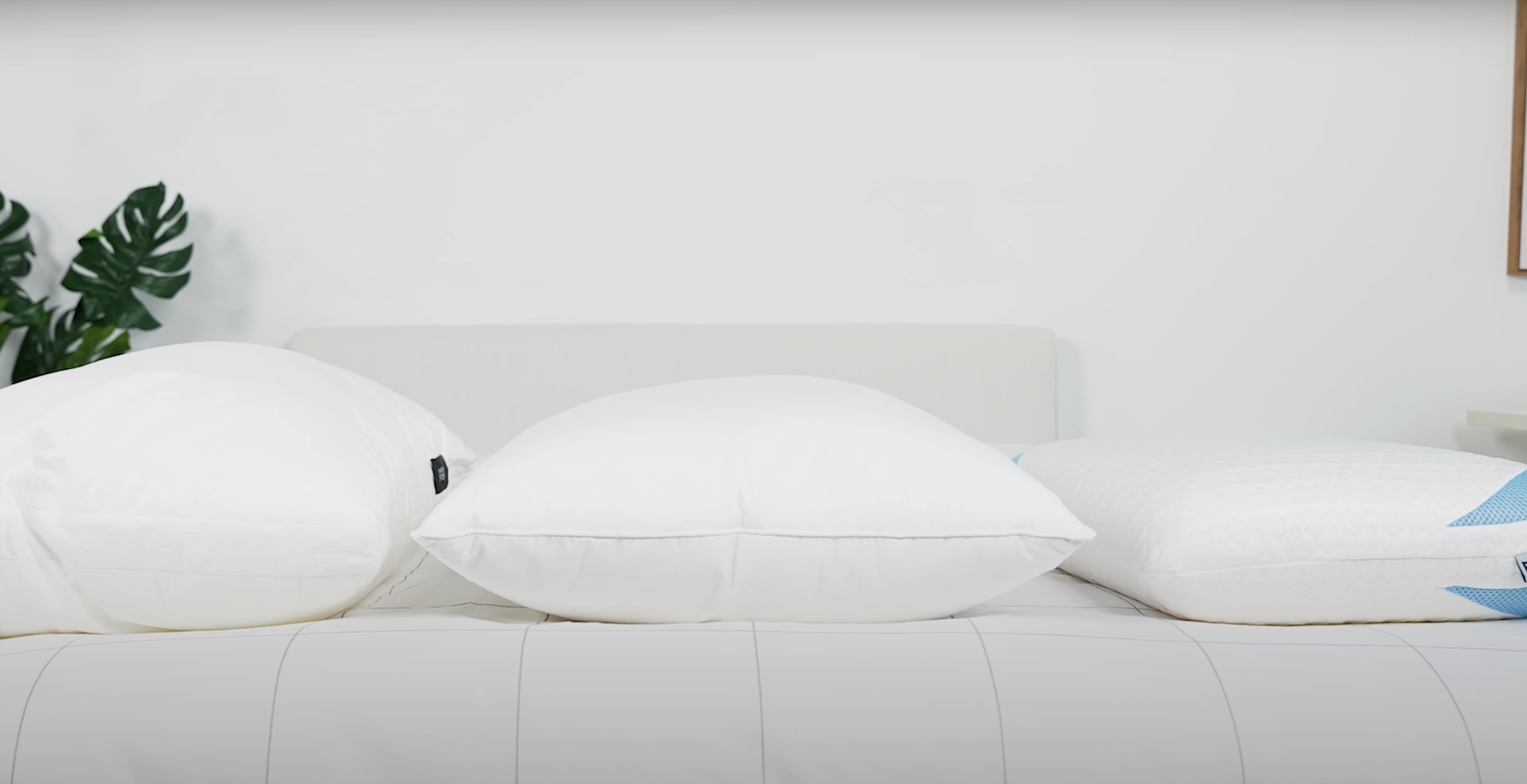

Articles
Why Do My Pillows Give Me A Headache
Modified: August 17, 2024
Looking for articles on why your pillows give you a headache? Find answers and solutions to this common issue to improve your sleep quality.
(Many of the links in this article redirect to a specific reviewed product. Your purchase of these products through affiliate links helps to generate commission for Storables.com, at no extra cost. Learn more)
Introduction
Have you ever wondered why your pillows sometimes give you a headache? Waking up with a pounding head can ruin your day before it even begins. While there can be various causes for headaches, your choice of pillows might be playing a significant role.
In this article, we will explore the connection between pillows and headaches, and how certain factors contribute to this discomfort. Understanding these factors can help you choose the right pillow and alleviate the nagging headaches that can affect your daily life.
Headaches can occur due to a variety of reasons, including stress, dehydration, poor sleep posture, and underlying health conditions. But the pillow you sleep on each night can also be a contributing factor.
Now, let’s dive deeper into this connection and shed light on the different factors that can contribute to headaches from pillows.
Key Takeaways:
- Choose the right pillow material, firmness, and shape to prevent headaches. Memory foam, contoured, and adjustable loft pillows can alleviate muscle tension and promote proper spinal alignment, reducing the risk of waking up with a headache.
- Maintain proper pillow hygiene and consider hypoallergenic options to minimize headache triggers. Regular cleaning, allergen-proof covers, and pillow replacements can create a soothing sleep environment, supporting overall well-being and reducing discomfort.
Understanding the Connection Between Pillows and Headaches
When it comes to understanding the connection between pillows and headaches, it’s important to consider the role of neck and head alignment during sleep. A pillow that lacks proper support or doesn’t provide the right level of comfort can lead to muscle tension, strain on the neck, and ultimately, headaches.
During sleep, our neck and spine need to be properly aligned to maintain a neutral position. If the pillow is too high or too low, it can cause the neck to bend unnaturally, putting stress on the surrounding muscles and joints. This can lead to tension headaches and even migraines in some cases.
Another crucial factor to consider is the pillow’s ability to provide adequate cushioning and support for the head. A pillow that is too firm may create pressure points, restricting blood flow to the head and causing headaches. On the other hand, a pillow that is too soft may not provide enough support, leading to poor alignment and potential discomfort.
Moreover, the type of pillow material and its allergenic properties can also contribute to headaches. Allergens such as dust mites, mold, and pet dander often accumulate in pillows over time. Breathing in these allergens can trigger sinus inflammation, leading to sinus headaches.
So, now that we have a better understanding of how pillows can contribute to headaches, let’s explore the specific factors that play a role in this discomfort.
Factors that Contribute to Headaches from Pillows
There are several key factors that can contribute to headaches directly related to pillows. By understanding these factors, you can make informed choices when selecting a pillow that will help alleviate headaches and promote better sleep.
Pillow Material
The material of the pillow can have a significant impact on headaches. Certain materials, such as memory foam, provide excellent support and contouring to the shape of your head and neck. This can help reduce muscle tension and alleviate headaches. On the other hand, pillows made from synthetic materials or low-quality foam might not provide the necessary support, leading to discomfort and headaches.
Pillow Firmness
The firmness of a pillow can greatly affect your comfort and the potential for headaches. It’s essential to find the right balance between firmness and softness. A pillow that is too firm can create pressure points and cause headaches, while a pillow that is too soft might not provide adequate support, resulting in poor neck alignment and muscle strain.
Read more: Why Do My Pillows Turn Yellow
Pillow Shape and Support
The shape and support of a pillow are crucial for preventing headaches. Contoured pillows, often designed with a dip or curve in the middle, can provide optimal support for the head and neck. This helps maintain a neutral position, reducing strain on the muscles and decreasing the likelihood of headaches. Additionally, pillows with an adjustable loft or height allow you to customize the support to your preference, further reducing the risk of headaches.
Pillow Allergens
Allergens present in pillows can cause headaches, especially for individuals who suffer from allergies or sensitivities. Microscopic organisms such as dust mites and mold can accumulate in pillows over time, triggering allergic reactions that can lead to sinus congestion and headaches. Opting for hypoallergenic pillows and regularly washing pillowcases can help minimize exposure to these allergens.
By considering these factors, you can select a pillow that caters to your specific needs and preferences, reducing the likelihood of headaches caused by pillow-related issues.
Pillow Material and Its Impact on Headaches
The material of your pillow can have a significant impact on the occurrence of headaches. Different pillow materials offer varying levels of support, comfort, and breathability, which can directly influence your sleep quality and overall well-being.
Memory Foam
Memory foam pillows have gained popularity in recent years due to their ability to contour to the shape of your head and neck. This material provides excellent support by evenly distributing your weight and relieving pressure points. The supportive nature of memory foam can help alleviate muscle tension, reducing the likelihood of waking up with a headache. Additionally, memory foam pillows are often hypoallergenic and resistant to dust mites, making them a suitable choice for allergy sufferers.
Read more: Why My Weight Scale Gives Different Readings
Latex
Latex pillows, made from the sap of rubber trees, offer a blend of softness and support. They are known for their durability and resilience, providing consistent comfort over time. Latex pillows have a natural bounce-back effect, allowing them to maintain their shape and provide adequate support to the head and neck. The inherent breathability of latex also helps regulate temperature, preventing overheating during sleep, which can contribute to headaches.
Feather and Down
Feather and down pillows offer a luxurious and soft sleeping experience. They are known for their plushness and ability to conform to your head and neck. However, it’s important to note that some individuals may be allergic to feather or down fillings, which can trigger allergic reactions and lead to headaches. Regular fluffing and maintenance of feather and down pillows is essential to prevent them from becoming lumpy and losing support.
Synthetic Fibers
Synthetic fiber-filled pillows, such as polyester, offer affordability and variety in terms of firmness and loft. While they may not provide the same level of contouring and support as memory foam or latex, synthetic pillows can still be a suitable choice for those with specific preferences. It’s important to choose high-quality synthetic pillows that retain their shape and support, as low-quality options may flatten over time, leading to poor alignment and potential headaches.
In summary, selecting the right pillow material can play a crucial role in preventing headaches. Consider your personal preferences, sleeping posture, and any potential allergies when choosing a pillow material that offers optimal support, comfort, and breathability.
Pillow Firmness and Its Relation to Headaches
The firmness of your pillow can significantly impact your comfort and the likelihood of experiencing headaches. Finding the right level of firmness that suits your individual needs is crucial for maintaining proper spinal alignment and reducing muscle tension.
Read more: Why Do Yellow Jackets Keep Following Me
Too Firm Pillows
Sleeping on a pillow that is excessively firm can create pressure points on your neck and head. This can lead to muscle strain, restricted blood flow, and ultimately result in headaches. When your head and neck are not properly supported, the muscles can become tense and overworked, leading to discomfort and pain.
Additionally, a pillow that is too firm may cause your neck to bend unnaturally, disrupting the natural curvature of the spine. This improper alignment can put stress on the muscles, joints, and nerves, increasing the risk of headaches.
Too Soft Pillows
On the other hand, sleeping on a pillow that is too soft can also contribute to headaches. Soft pillows may lack the necessary support to maintain proper spinal alignment. As a result, your head and neck may sink too deeply into the pillow, causing strain on the muscles and joints. This strain can lead to muscle imbalance and discomfort, potentially resulting in headaches.
Optimal Pillow Firmness
The ideal firmness of a pillow is subjective and varies from person to person. It’s important to find the right balance that provides adequate support while still allowing for a comfortable sleep experience. A pillow with medium firmness often works well for most individuals.
Medium-firm pillows offer a good combination of support and cushioning. They can provide enough support to keep your head and neck in proper alignment while still allowing for some contouring to alleviate pressure points. The medium firmness helps distribute weight evenly, reducing the likelihood of waking up with a headache.
It’s worth noting that your preferred sleeping position can influence your choice of pillow firmness. For example, back and stomach sleepers typically benefit from a slightly softer pillow, while side sleepers generally require a firmer pillow to maintain proper spinal alignment.
Ultimately, finding the right pillow firmness is a personal journey. Experiment with different firmness levels and pay attention to how your body responds. Take note of any changes in comfort and headache frequency, and adjust accordingly until you find the optimal firmness that supports your neck, alleviates muscle tension, and helps prevent headaches.
Pillow Shape and Support in Headache Prevention
The shape and support of your pillow play a crucial role in preventing headaches and promoting overall comfort during sleep. The right pillow shape and support can help maintain proper spinal alignment, alleviate muscle tension, and reduce the risk of waking up with a headache.
Read more: Why Do People Hug Pillows
Contoured Pillows
Contoured pillows are specifically designed to provide optimal support for the head and neck. These pillows often feature a dip or curve in the middle, allowing your head to rest in a natural position while supporting the curvature of your neck. By promoting proper alignment, contoured pillows can help reduce muscle strain and tension that can lead to headaches.
There are different types of contoured pillows, such as cervical pillows, which have a more pronounced curved shape to cradle the neck, and orthopedic pillows, which offer additional support for the shoulders and spine. These pillows can be particularly beneficial for individuals with chronic neck pain or recurring headaches.
Adjustable Loft Pillows
Pillows with an adjustable loft or height are another excellent option for headache prevention. These pillows allow you to customize the level of support to suit your sleeping position and personal preference. By adding or removing fill material, you can determine the loft that provides the optimal support for your head and neck.
Side sleepers, for instance, may need a higher loft to maintain proper alignment, while back or stomach sleepers may require a lower loft to avoid straining their neck. Adjustable loft pillows empower you to find the perfect balance for your individual needs, reducing the likelihood of waking up with a headache.
Pillow Support for Different Sleeping Positions
The support needed from a pillow varies depending on your preferred sleeping position. Here’s a breakdown of the recommended support for each position:
- Back Sleepers: Back sleepers typically require a pillow that supports the natural curve of their neck and promotes proper alignment with their spine. Medium firmness pillows with a slight contour or cervical roll can help achieve this.
- Side Sleepers: Side sleepers need a pillow that fills the space between their ear and shoulder, maintaining a neutral position for their head and neck. A firm or medium-firm pillow with a higher loft can provide the necessary support.
- Stomach Sleepers: Stomach sleepers should opt for a thinner pillow or consider sleeping without one to prevent strain on their neck. This sleeping position puts the least amount of pressure on the neck and promotes spinal alignment.
By choosing a pillow shape and support that aligns with your preferred sleeping position, you can minimize the risk of headaches caused by improper positioning and muscle strain.
Remember, everyone’s body and preferences are unique, so take the time to experiment with different pillow shapes and supports to find the one that provides the most comfort and headache prevention for you.
Pillow Allergens and Their Potential Headache Triggers
Allergens present in pillows can potentially trigger headaches, especially for individuals who suffer from allergies or sensitivities. Dust mites, mold, pet dander, and other microscopic particles can accumulate in pillows over time, leading to allergic reactions and sinus inflammation that can result in headaches.
Read more: Why Do Cats Lick Pillows
Dust Mites
Dust mites are tiny insects that thrive in warm and humid environments, such as bedding, including pillows. They feed on dead skin cells and their droppings can trigger allergies, causing symptoms like sneezing, congestion, and headaches. Dust mite allergy is a common trigger for sinus headaches, as the allergens can cause irritation and inflammation in the sinuses.
Mold
Mold can grow in damp or humid conditions, and pillows provide a suitable environment for their development if exposed to moisture. Mold spores can be inhaled, leading to allergic reactions and sinus congestion. For individuals with mold allergies, sleeping on a pillow contaminated with mold can trigger headaches and exacerbate respiratory symptoms.
Pet Dander
Pet dander, which consists of tiny flakes of skin, saliva, and urine from animals, can also accumulate in pillows if you share your bed with pets. Allergies to pet dander can cause nasal congestion, itching, and headaches. Even if you don’t have a pet allergy, the presence of pet dander in your pillow can potentially trigger headaches if you are particularly sensitive to these allergens.
Allergen Reduction and Prevention
To minimize the potential headache triggers from pillow allergens, it is important to take measures to reduce and prevent their presence:
- Regular Cleaning: Washing your pillow regularly, according to the manufacturer’s instructions, can help remove allergens and keep your pillow fresh. Use hot water and dry your pillow thoroughly to kill dust mites and remove any mold spores.
- Hypoallergenic Pillows: Consider using hypoallergenic pillows made from synthetic materials or natural substances that are resistant to common allergens. These pillows are designed to reduce the presence of dust mites, mold, and pet dander, offering a healthier sleep environment.
- Pillow Covers: Encasing your pillow in allergen-proof covers can provide an additional barrier against allergens. These covers are tightly woven to prevent allergens from penetrating while still allowing for breathability and comfort.
- Regular Vacuuming: Vacuuming your bedroom regularly, including your pillows, can help remove dust mites and their allergenic particles that may have settled on the surface. Use a vacuum cleaner with a HEPA filter for optimal dust mite removal.
- Pet-Free Zone: If you have pet allergies, it’s best to keep your bedroom a pet-free zone to minimize exposure to pet dander. This includes ensuring that your pillow is free from any pet-related allergens.
By taking these precautionary measures and maintaining a clean and allergen-free sleep environment, you can reduce the risk of allergies and potential headaches caused by pillow allergens.
Read more: Why Do Dogs Like Pillows
Proper Pillow Maintenance to Prevent Headaches
Maintaining your pillow properly is essential not only for its longevity but also for preventing headaches and ensuring a clean and comfortable sleep environment. Here are some important practices to follow for proper pillow maintenance:
Regular Cleaning
Regularly cleaning your pillow is crucial to remove allergens, sweat, oils, and dirt that can accumulate over time. Most pillows can be machine washed, but always refer to the manufacturer’s instructions for specific care guidelines. It is generally recommended to wash pillows at least every six months to keep them fresh and free from potential irritants.
Pillowcase and Pillow Cover
Using a clean pillowcase and an allergen-proof pillow cover is essential for maintaining a healthy sleep environment. Pillowcases should be washed at least once a week to remove oils, sweat, and debris. Allergen-proof pillow covers act as an additional barrier against dust mites, mold, and pet dander, reducing the risk of allergic reactions and potential headaches.
Fluffing and Shaping
Regularly fluffing and shaping your pillow helps to maintain its loft and support. Pillows tend to flatten over time, which can cause improper alignment of the head and neck, leading to muscle strain and potential headaches. Give your pillow a good fluff every morning and reshape it to ensure optimal comfort and support.
Read more: Why Do Cats Knead Pillows
Proper Storage
When not in use, pillows should be stored in a clean and dry place. Avoid damp or humid storage areas as they can promote mold and mildew growth. Pillow storage bags or breathable pillow protectors can help keep pillows fresh and protected from dust and potential allergens.
Replacing Old Pillows
Pillows have a lifespan, and over time they lose their support, cushioning, and shape. It’s important to replace your pillows every 1-2 years, or when you notice signs of wear and tear. Sleeping on a worn-out pillow can contribute to poor neck alignment and increased risk of headaches.
Consider Personal Preferences
Everyone has different pillow preferences. Some people prefer softer pillows, while others prefer firmer ones. Consider your personal sleeping position and any particular comfort needs when selecting a pillow. Testing different pillow types and firmness levels can help you find the perfect fit that promotes comfort and prevents headaches.
By following these practices, you can maintain your pillows in optimal condition, promoting better sleep quality and reducing the likelihood of headaches caused by improper pillow maintenance or allergen accumulation.
Pillow Recommendations for Headache Sufferers
For individuals who suffer from headaches, selecting the right pillow can make a significant difference in their comfort and overall sleep quality. Here are some pillow recommendations to consider for headache prevention:
Read more: Why Do We Sleep On Pillows
Memory Foam Pillows
Memory foam pillows are often recommended for headache sufferers due to their ability to contour to the shape of your head and neck. These pillows provide excellent support and help alleviate muscle tension, promoting proper alignment and reducing the risk of headaches. Look for memory foam pillows that offer medium firmness and contouring features.
Read more: Why Do People Hug Pillows
Contoured Pillows
Contoured pillows, also known as cervical pillows, are specifically designed to provide optimal support for the head and neck. These pillows have a dip or curve in the middle, intended to cradle your head and support the natural curvature of your neck. Contoured pillows are particularly beneficial for individuals with chronic neck pain or cervical-related headaches.
Adjustable Loft Pillows
Pillows with adjustable loft or height are versatile options that allow you to customize the support to your preference. These pillows typically come with removable inserts or fill material, enabling you to increase or decrease the loft as needed. Adjustable loft pillows are beneficial for individuals who prefer specific support levels and for those who switch sleeping positions during the night.
Hypoallergenic Pillows
If you are prone to allergies or sensitive to common allergens, hypoallergenic pillows can be a great choice. These pillows are made from materials that are resistant to dust mites, mold, and other allergens, reducing the risk of sinus inflammation and allergic reactions that can potentially trigger headaches. Look for pillows labeled as hypoallergenic or specifically designed for allergy sufferers.
Read more: Why Do New Pillows Smell
Personal Comfort and Preference
Ultimately, finding the right pillow for headache prevention is a personal endeavor. Consider your preferred sleeping position and any specific comfort needs you have. Exploit the trial period offered by many pillow manufacturers to test various options and assess how they impact your headaches. Some people find relief with softer pillows, while others prefer firmer support. Take the time to experiment and find the pillow that works best for you.
Remember, maintaining proper pillow hygiene and replacing your pillow when it shows signs of wear is important in ensuring its efficacy as a headache prevention tool. By making an informed choice and selecting a pillow that caters to your needs, you can significantly reduce the frequency and intensity of headaches, improving your sleep and overall well-being.
Conclusion
Choosing the right pillow is crucial for preventing headaches and promoting a restful sleep. Understanding the connection between pillows and headaches allows us to make informed decisions when it comes to selecting a pillow that provides optimal comfort, support, and allergen control.
Factors such as pillow material, firmness, shape, and support all play a role in headache prevention. Memory foam pillows offer excellent contouring and support, while contoured pillows provide specific neck and head alignment. Adjustable loft pillows allow for personalized support, while hypoallergenic pillows are ideal for those prone to allergies.
Proper pillow maintenance is equally important. Regularly cleaning your pillow, using clean pillowcases and allergen-proof covers, and maintaining its shape and support through fluffing and shaping can help minimize the risk of headaches caused by allergens and poor alignment.
For individuals who suffer from headaches, finding the right pillow can alleviate muscle tension, promote proper spinal alignment, and reduce the risk of waking up with a headache. Consider your personal preferences, sleeping position, and comfort needs when selecting a pillow that best suits you.
Remember, everyone’s body and preferences are unique, so it may take some trial and error to find the perfect pillow for headache prevention. Be patient and mindful of any changes in comfort and headache frequency as you explore different options.
By taking the time to select and maintain the right pillow, you can create a soothing sleep environment that supports your head, neck, and overall well-being. Restful, headache-free nights await as you embrace the power of a pillow that suits your needs and keeps discomfort at bay.
Frequently Asked Questions about Why Do My Pillows Give Me A Headache
Was this page helpful?
At Storables.com, we guarantee accurate and reliable information. Our content, validated by Expert Board Contributors, is crafted following stringent Editorial Policies. We're committed to providing you with well-researched, expert-backed insights for all your informational needs.







0 thoughts on “Why Do My Pillows Give Me A Headache”